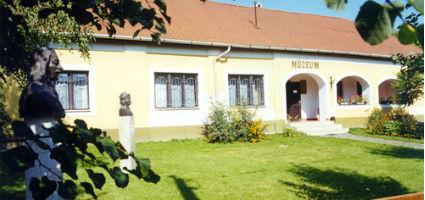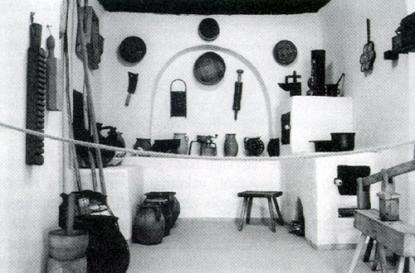2024. November 24. Sunday
Ferenc Zajti Region Historical Collection - Újfehértó
 |
Address: 4244, Újfehértó Egészségház utca 2.
Phone number: (42) 290-600
E-mail: umuzeum@enternet.hu
Opening hours: Tue-Fri 9-15
Saturdays and Sundays only for groups on prior notice |
Museum tickets, service costs:
|
Ticket for adults
|
50 HUF
|
|
|
Ticket for pensioners
|
25 HUF
|
The house furnished for the exhibition consists of a porch-kitchen and a room alongside the street. Its roofing was transferred here from an old peasant house judged to be pulled down. We bisected the inside of the house, so that visitors can see the roofing system that consists of mud, planks and the cross beams.

The space of the kitchen is covered by the chimney, into which the smoke of the stove was directly drifting. The tools stored here were the utility items of the everyday life. The plates hungh above the porch served for mere ornamentation.
The Greek Catholic items refer to the fact that three quarters of the people in the village hold the Catholic belief. The religious icons and the house altar were serving as items of the daily life.
Since the Catholics generally were deeply religious, entering the house they said a short prayer to God then crossed themselves. The spot was also used for kneeling and praying.
Only rare and honoured guests were invited to the table. The head of the family took his seat here, with the lads and the older children around him. Women as well as the usual and formal guest were allowed to sit on the edge of the stove. The housewife was also carrying out her works of looming, spinning, kneading etc. here.

The space of the kitchen is covered by the chimney, into which the smoke of the stove was directly drifting. The tools stored here were the utility items of the everyday life. The plates hungh above the porch served for mere ornamentation.
The Greek Catholic items refer to the fact that three quarters of the people in the village hold the Catholic belief. The religious icons and the house altar were serving as items of the daily life.
Since the Catholics generally were deeply religious, entering the house they said a short prayer to God then crossed themselves. The spot was also used for kneeling and praying.
Only rare and honoured guests were invited to the table. The head of the family took his seat here, with the lads and the older children around him. Women as well as the usual and formal guest were allowed to sit on the edge of the stove. The housewife was also carrying out her works of looming, spinning, kneading etc. here.
